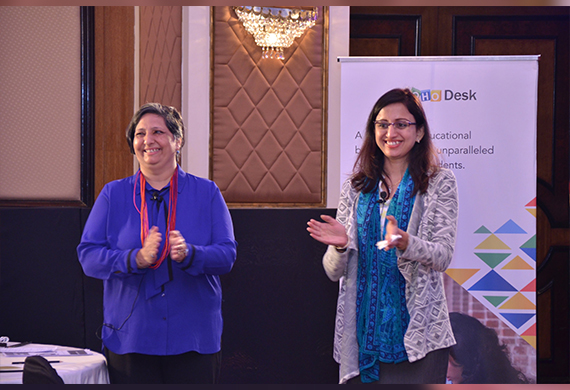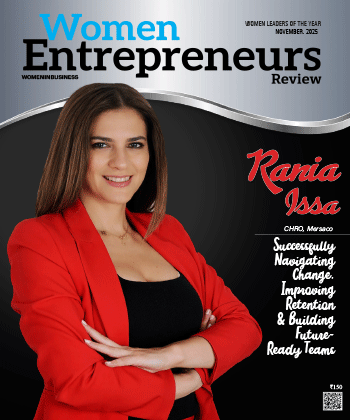
With 80% Female Workforce this is how Terragni Consulting is Championing Diversity & Inclusion
By: WE Staff | Thursday, 1 September 2022
In an industry dominated by men, Terragni Consulting has achieved female employee composition of 80%. We speak to Harsh Kapur Pillai, Director, and Dipti Sapatnekar, Director at Terragni Consulting to understand how DEI Initiatives can help organizational growth and much more.
The first D&I survey from the India Diversity Forum released in 2022 had some interesting observations. The survey found that diversity and inclusion today are board level agendas and also receive top leadership sponsorship.
However most organizations fail to put their money where the mouth is. The same survey found that of all the companies surveyed only 42 percent had a written D&I policy. Similarly only 44 percent of the total companies surveyed hired at least 33 percent women over the last three years.
The numbers tell a story of a mismatch between intent and action. However, the business case for diversity, equity, and inclusion (DE&I) in today’s corporate world has become stronger than ever. It not only makes financial sense but also helps companies look at challenges from different lenses, thus simplifying problem solving.
Terragni Consulting, a human engagement company is one of the outliers in an industry where women find themselves in a minority. In an industry dominated by men, the company is not only co-founded by women but also has a female employee composition of 80%.
Terragniis bringing more women employees onboard with an aim to encourage the female workforce in the industry. Present at 4 locations, the women workforce at Terragni consists of psychologists, anthropologists, mathematicians, and behavioral scientists.
In an in-depth interview with the Women Entrepreneur India team, Harsh Kapur Pillai, Director, and Dipti Sapatnekar, Director, Terragni Consulting tell us about the company’s mandate to promote women’s participation in the workforce.
The business case for diversity, equity, and inclusion (DE&I) has become stronger than ever, however, many companies are still not making an active effort to build an inclusive and diverse workforce. What is your take on this?
The needle on DEI initiatives has moved positively rather significantly in the last decade or so.Organizations do see value in inculcating DEI initiatives as part of their day-to-day working ethos.However, much needs to be done.There are two approaches to DEI; one is to push DEI as a “socially responsible” cause and the other is to showcase the intrinsic “value” to the business that DEI brings to an enterprise. Businesses are designed to maximize revenue and value to their shareholders. This is their primary objective in a manner of speaking. Thus, till the potential value and benefits of incorporating DEI initiatives as a matter of active strategy are not highlighted and showcased, there is little to no direct motivation to do so. DEI thus becomes a “nice to have” focus area, not a “must have”.
This is a major reason why DEI initiatives do not occupy the strategic mind space of organizations and their leaders.
In your opinion how can a diverse and inclusive workforce impact the overall bottom line of an organization?
In a complex, uncertain and fast-changing world, being mono chromatic is a handicap. A severe one at that. Being fixated on hiring colleagues who are, what I like to call “PLU” ~People like Us, means one ends up hiring more of the same. Where will then the plurality of thinking come from? Where will the diverse perspectives come from? This diversity is critical when called upon to solve complex challenges and think from multiple perspectives. This is the value that a diverse and inclusive work force brings to the table. This has a direct impact on the top and bottom line. Organizations become better at facing complex challenges and in turn become better at being agile.
Take us through the various D&I strategies adopted by the Terragni Consulting management in order to build a workforce that consists of 80 percent women?
As mentioned earlier, if we were to view D&I as a “bolt-on”, nice to have initiative, it will always be an afterthought and a “tick-box” activity. At Terragni Consulting, very early on in the last 12 years, we have been in business, we have pursued Diversity as a part of an active strategy.
Thus, for us diversity is not a quota-centric activity that we need to undertake.It is far deeper and wide-reaching. It has been our belief that if the workforce is aligned and empowered, that in itself drives strategic shifts.
Women colleagues are empowered to take risks and failure is not seen as taboo. This empowerment to drive initiatives and decisions is something most women colleagues find strange at first. Many of them are not used to being handed over the reins to decision-making. But once they see that this is the essential workplace culture DNA of Terragni, then they revel in this faith and belief reposed in them.
What sort of an impact have you noticed in the organization’s productivity or efficiency owing to having a women-centric workforce?
Terragni’s core strength lies in solving complex problems that organizations find difficult to solve on their own internally or have tried and not succeeded with other consulting partners.
Solving complex problems to stiff deadlines bring with them multiple challenges. Managing client expectations, internal expectations, and costs, all this while ensuring that work is enjoyable and delivered to high-quality standards.
It has been our experience and belief that women colleagues with their inbuilt temperament, problem-solving skills and dedication excel in delivering to this demand.
Can you narrate an anecdote or incident that demonstrates the positive impact brought along by building a women-centric workforce?
One word: Empathy. There have innumerable occasions where, precisely because we are a women-centric workforce there is deep empathy between colleagues, especially when one team member is facing a challenge at home, may it be with their child, their in-laws, or parents. The seamless stepping in by others in the team is a natural outcome of this empathy. This is because each member on that team knows what her colleague is going through and is part of the fraternity.
Women often find themselves at a disadvantage when it comes to advancing their career in STEM fields. In your opinion what steps can be taken on an organizational level to improve women’s representation in STEM roles?
Firstly, let’s start with the women intake for STEM at the education phase. There is a general notion among parents and girls that a STEM education is best as a stepping stone for an MBA. Pure STEM girl students fear the work environment they would be saddled with later on in their career and this dissuades most of them from pursuing an active STEM career. This bias needs to be corrected.
This correction has to come by showcasing the opportunities that STEM has to offer to young girls. There has to be better communication by organizations.The intake pool must be widened.
Organizations must also realize that women have superb analytical and decision-making capabilities. They also make for a focused dedicated workforce and it would be counterproductive to ignore such a large talent pool.
Roles can and must be carved out that play to these strengths and organizations in their Employer branding initiatives must necessarily highlight these.Communication is key.
Most Viewed
- 1 Women's Health Startup HerMD Closing Doors Amid Industry Challenges
- 2 5 Famous Women in Indian Armed Forces
- 3 Saudi Women No longer Require Male Permission for Clothing Choices, says Prince MbS
- 4 Kolkata Medtech Startup Innovodigm Raises Rs 5.5 Crore Seed Funding Led by IAN Group
- 5 Yamunanagar's Kashish Kalra Honoured after Securing 111th Rank in UPSC Civil Services Exam
- 6 Madurai Appoints Its First Woman Corporation Head
- 7 IAS Vijayalakshmi Bidari Appointed as the new Nagpur Divisional Commissioner
- 8 American Entrepreneur Lucy Guo Overtakes T Swift to become Youngest Female Billionaire
- 9 ICC Women's World Cup 2025 Trophy Showcased at Indore's Holkar Stadium
- 10 Aparna Saxena's Beauty Venture AntiNorm Launches in India
- 11 Vidya Nataraj Co-Founded BlueStone Jewellery & Lifestyle files IPO
- 12 5 Women Freedom Fighters of India
- 13 Dr. G Krishnapriya appointed as CEO for Trichy
- 14 M3M & Sirona Partner to Introduce Menstrual Hygiene Vending Machines in 15 Locations
- 15 Punjab Govt launches SHE Cohort 3.0 Supporting Tech-led Women Startups
- 16 Indian origin Lawyer, Sweena Pannu appointed as the US New Superior Court Judge
- 17 The Aurora Tech Award recognizes 4 Indian Women-led Startups
- 18 Kerala's Republic Day parade featured an all-female tableau
- 19 Manisha Kabbur Becomes Karnataka's First Woman International Karate Coach
- 20 Director K. S. Ravikumar's Daughter Maalica Ravikumar Launches Life Coaching Company 'Evergrowth Academy' for Women
- 21 Leezu's Raises Pre-Seed Funding to Accelerate Growth in Sexual Wellness Industry
- 22 Sattu: Super-easy summer drink for PCOS gut healing
- 23 Swathi Nelabhatla creates Sitha App, India's First Women-Exclusive Gig Platform
- 24 7 Timeless Female Kathak Dancers & their Iconic Legacies
- 25 Meet 7 Iconic Women Architects of Modern India & their Most Impactful Work
- 26 This Woman-led Insuretech Startup is Helping Bridge the Education Financing Gap in India
- 27 Women Leaders Share Lessons Learnt from India Women's WC Win
- 28 5 Enterprising Women Founders Powering Singapore's Tech & Innovation Landscape
- 29 4 Women. 4 Stories. One Vision for Smarter, Stronger Healthcare
- 30 Global Gender Gap Narrows to 68.8%, But Full Equality 123 Years Away: WEF Report 2025
- 31 Changemakers: 7 Women Entrepreneurs Taking the Make in India Movement Forward
- 32 Meet Lucy Guo, The Youngest Self-Made Female Billionaire Disrupting Tech
- 33 How Women are Driving India's Festive Online Shopping Surge






